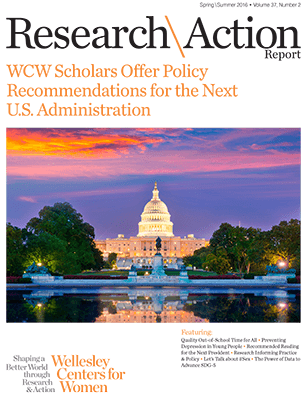by Ellen Gannett, M.Ed. and Elizabeth Starr, M.Ed., National Institute on Out-of-School Time
Quality Out-of-School Time Begins with Investment in Staff
As expectations for high-quality afterschool and outof-school time (OST) programs continue to rise, a skilled, stable and committed OST workforce is critically important. Yet supports for youth workers, and resulting staff quality, remain uneven at best due in part to a highly fragmented landscape. Compensation remains stagnant and opportunities for professional advancement and public recognition remain practically non-existent.
A Snapshot of Quality OSTOver 25 years of research in the field has demonstrated that youth who participate in high-quality OST programs show: increased self-confidence and self-esteem; improved social skills with peers; increased pro-social behaviors; intrinsic motivation, concentrated effort, and positive states of mind; improved attitudes and feelings towards school; reduced problem behaviors; and reduced engagement in risky behaviors (Bartko & Eccles, 2003; Durlak & Weissberg, 2007; Gambone, Klem, & Connell, 2002; Larson, 2000; Shernoff & Vandell, 2007; Vandell, Resiner, & Pierce, 2007). Research also shows that participation in high-quality OST programs helps to close the achievement gap, has positive long-term effects on school attendance and task persistence, has positive effects on school grades and academic work habits, and improves achievement test scores (Durlak & Weissberg, 2007; Vandell, 2013). This research on quality and child/youth outcomes raised new questions about the workforce and the beginning of a national conversation on professionalizing the field. The National Institute on Out-of-School Time (NIOST) knows from its Massachusetts Afterschool Research Study, completed in 2005 (www.wcwonline.org/MARS), that having effective staff is the key to quality. But how much do we know about youth workers and afterschool staff? And once we know, how can we build a strong, stable, committed workforce and professional identity?
In 2013, the National AfterSchool Association (NAA) conducted a survey of its members to test long-held assumptions about the low pay, experience, and education levels of those involved in the afterschool industry. The survey demonstrated that the afterschool and OST workforce has higher levels of education, more longevity in the field, and better compensation than previously reported. Survey findings include:
- 34 percent have a master’s or doctorate degree, and 11 percent have completed some postgraduate work
- 39 percent have been with their current employer for more than ten years
- 47 percent have been in the afterschool field for more than ten years
- 70 percent are salaried employees.
Historically, the field of youth work has been fragmented by different goals, regulations, funding streams, auspices, and locations. For example, afterschool, juvenile justice, summer camp, and residential care have been considered distinct fields, and in some communities of practice, “youth work” implies working primarily with adolescents. However, these kinds of programs all involve working with young people to achieve similar positive youth outcomes. A broad definition of youth work unites the field and creates a stronger profession and discipline.
Approaches & Recommendations
A strong and well-prepared workforce is key to quality and to meeting the increased demands being placed on OST to contribute to both social/emotional and academic success of children and youth. While the recent survey results demonstrate a better-than-gloomy picture of the state of the workforce, we still have a lot to do in terms of stemming turnover, strengthening retention and recruitment efforts, and building a professional identity.
STRENGTHEN WORKFORCE POLICIES:
- Support the creation of State Career Pathways that connect increased training and qualifications with advancements in role, salaries, benefits, and status.
- Support creative experimentation to address compensation concerns, such as loan forgiveness and partnering with the business community.
- Provide incentives and tiered reimbursements for programs that hire certified and credentialed staff.
- Earmark funding dedicated to professional and career development.
- Support the visibility of this workforce through communication, advocacy, and public awareness efforts.
TAKE A SYSTEMS APPROACH:
Public-private collaborations—between municipal, state, and federal agencies and departments that are committed to education, children, and families—could be the solution. For example, what would happen if more public colleges would commit to offering certificate and degree programs, and if non-profit and for-profit direct-service providers would offer meaningful, paid internships and career ladder opportunities for the youth workers, program directors, and managers who complete these educational requirements? The systems would be strengthened by shared commitments and pursuit of policies and practices that promote high-quality OST for youth and children.


